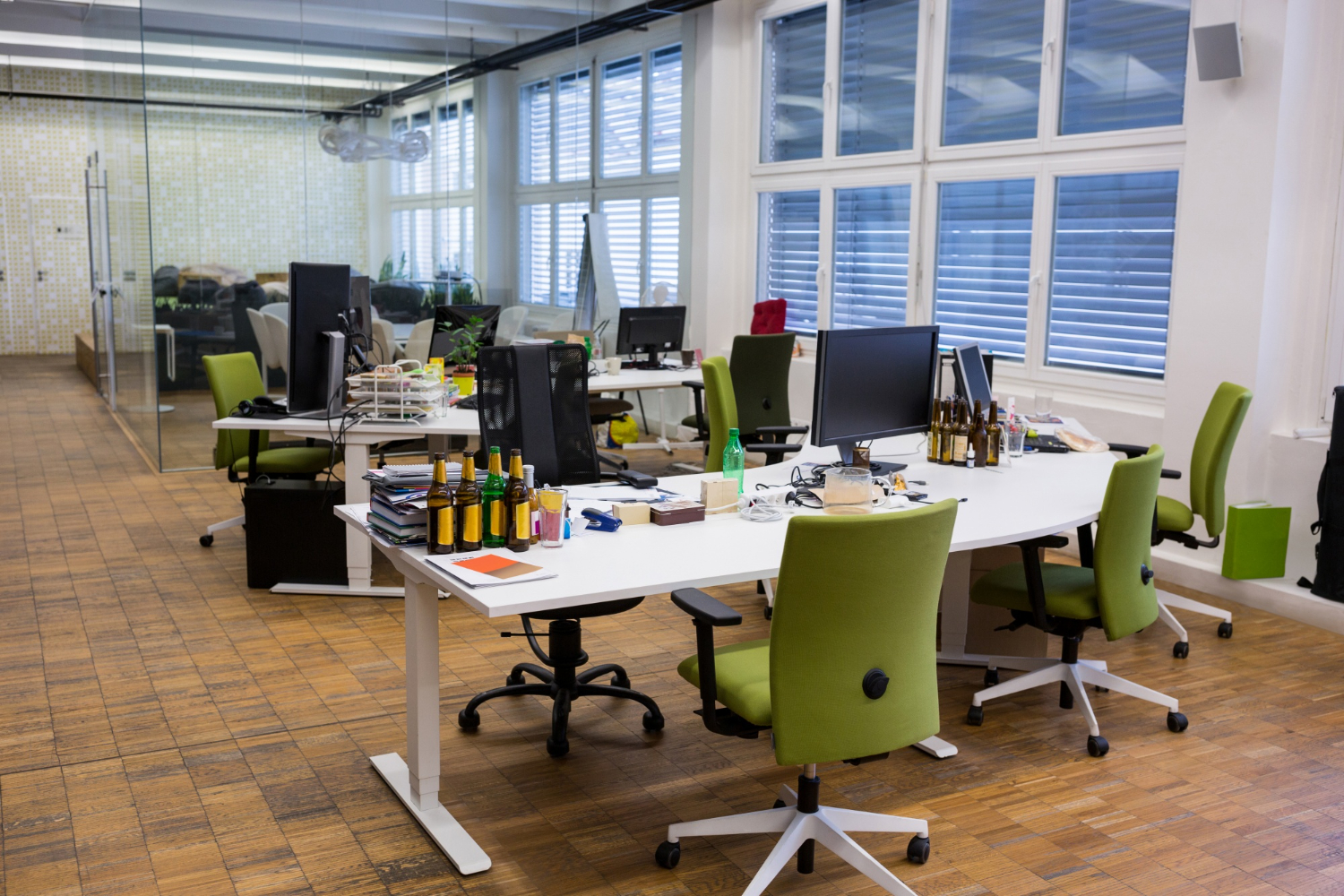Office Workstations Designed for Quiet Work: Enhancing Concentration
The technological advancements have made work environments a fast-paced ground, filled with distractions. This is when office furniture with a thoughtful design becomes a need of the hour. This is taken to the next level when you have a tailored office workstation with a quiet work environment.
Such workspace does not just boost productivity but also has other implications that will soon be revealed. Businesses can create a work atmosphere that encourages deep focus and efficiency by focusing on design elements that foster tranquility.
With the rise of open-plan offices and collaborative workspaces, the need for privacy and a distraction-free zone has never been more essential. Distraction-free zones are a liberty only a few workspaces enjoy.
The following sections will look at the different aspects of a quiet workspace and how office workspaces can become a space for focus.
The Importance of Quiet Workspaces
A quiet workspace is necessary for many professionals as not everyone’s working style is the same. Some can work amidst utter chaos, while some require quiet to focus on the task at hand – be it writing or programming.
The ambient environment in an office is necessary for boosting productivity and decreasing stress levels by promoting concentration.
Even latest research suggests the negative impact of noise pollution in workspaces that can hinder cognitive performance. Its antidote is an investment in solutions that prioritize quiet office workstation.
Understanding Noise Pollution in the Office
There are various sources for noise pollution in the workspace. From machinery to phone calls and foot traffic, where there’s people, noise often follows.
These distracting elements are harmful to employees who have been used to a quiet space for work. It becomes necessary for their focus, which further improves their job satisfaction and overall morale.
Moreover, employees working in a noisy environment find it extremely difficult to stay efficient and productive. Consequently, this leads to longer working hours, giving rise to a sense of frustration.
In addition, constant distractions often come with interruptions that cause mental fatigue. This reduces the brain’s ability to effectively process information.
Studies have shown that individuals working in quieter settings tend to have higher concentration levels and can retain information better than those in noisy environments.
Designing Office Workstation for Quiet Work
To create workstations that promote quietness, it is crucial to incorporate specific design features that mitigate noise and enhance focus. Here are several considerations for designing practical office workstations:
Acoustic Panels and Dividers
One of the most effective ways to reduce noise pollution is using acoustic panels and dividers. These elements absorb sound and create barriers between workstations, minimizing noise transmission.
By strategically placing these panels around workstations, employees can enjoy a more peaceful environment, allowing them to concentrate better on their tasks.
In addition to reducing noise, these panels can add an aesthetic appeal to the workspace. Available in various colors and designs, they can complement the overall office decor while serving a functional purpose.
Ergonomic Design
An ergonomic workstation plays a vital role in enhancing concentration. Comfort is critical when employees are required to sit for long hours.
An ergonomic chair, an adjustable desk, and accessories like footrests and keyboard trays contribute to a healthier posture and a more comfortable working environment.
When employees are comfortable, they can focus better on their work. Ergonomic designs help prevent discomfort and fatigue, allowing workers to stay engaged and productive throughout the day.
Controlled Lighting
Lighting plays a significant role in creating a conducive work environment. Natural light is often the best option, enhancing mood and reducing eye strain.
However, adjusting LED lights can help create an optimal workspace with limited natural light.
Adjustable lighting allows employees to customize their environment to their liking, reducing glare and enhancing comfort. During quiet work sessions, dimming lights can foster a more serene atmosphere, encouraging deeper concentration.
Private Spaces and Quiet Rooms
In addition to designing individual workstations, organizations can enhance quiet work by incorporating private spaces or quiet rooms within the office. These areas can be used for focused work, meetings, or a place to recharge during the day.
Quiet rooms should have comfortable seating, soundproofing, and minimal distractions. Offering employees the option to retreat to these spaces when they need to concentrate can increase productivity and overall job satisfaction.
The Role of Technology in Quiet Office Workstation
Incorporating technology can further enhance quiet work environments. For instance, noise-canceling headphones can help employees block out distractions while working. Additionally, software tools that facilitate communication without the need for constant verbal interaction can reduce the overall noise level in the office.
Implementing chat platforms, project management tools, and collaboration software allows employees to communicate effectively while minimizing disruptions. By leveraging technology in this way, organizations can support a quieter, more focused workplace.
The Benefits of Quiet Office Workstation
Investing in office workstations designed for quiet work offers numerous benefits for employees and organizations. Some of these advantages include:
- Increased Productivity
Employees can concentrate better in quiet environments, improving efficiency and productivity.
- Enhanced Job Satisfaction
A peaceful workspace contributes to employee satisfaction and well-being, reducing stress and burnout.
- Improved Collaboration
While individual workstations promote concentration, creating quiet areas for collaboration can foster teamwork without the chaos of a noisy office.
- Reduced Turnover Rates
Organizations prioritizing employee comfort and focus will likely experience lower turnover rates as employees feel valued and supported.
Creating a Culture of Focus
Creating a culture that values focus and concentration is essential for organizations to truly benefit from office workstation designed for quiet work. This includes encouraging employees to take breaks when needed, respecting quiet hours, and utilizing private spaces for deep work.
Management should also lead by example. They should demonstrate the importance of a balanced work environment. Organizations can empower employees to perform at their best by fostering a culture prioritizing quiet work.
How to Find a Quiet Office Workstation in Shared Spaces
co-working is one of the perfect antidotes to loneliness from working from home. But finding a space that lets you get in your zone comes with a problematic downside. This is the zone where you are entirely focused on your work and there’s no distraction.
Having access to a quiet office workstation offers solutions for employees and companies looking for a place to get work done without distractions.
Working from home isn’t suitable for everyone. Studies have shown a boost in employee morale for those who frequently use office workstations.
Working in a shared space such as the modern corporate offices can be overwhelming for those working remotely.
This is when dedicated spaces come in to save the day. If your office does not have dedicated quiet space, you can do the following:
- Use noise-canceling earphones: This is the go-to weapon for those looking for some quiet workspace amidst the corporate office’s chaos. Noise-canceling earphones are a fantastic alternative that allows you to enter your focus zone. Plus, who doesn’t love some background music in their life?
- Earplugs dedicated to use in workspaces are another alternative that will enable you to control distractions around you. These earplugs are designed to ensure the surrounding noise does not overwhelm you – including in the workspace.
These are two of the most common yet effective ways you can enjoy working in a quiet office workstation. Even if your office does not provide a dedicated space.
Final Thoughts
In an increasingly noisy world, designing office workstations for quiet work is more than just a trend; it’s necessary. Organizations can create environments that promote concentration and productivity by incorporating sound-absorbing materials, ergonomic designs, and advanced technology.
As businesses adapt to the changing nature of work, investing in quiet workstations will be crucial. From enhancing employee well-being and overall organizational success.
Read Also:
- Upgrade Your Work-From-Home Experience with the Best Office Humidifier
- How Your Dentist Can Help You Achieve A Brighter, Healthier Grin?


